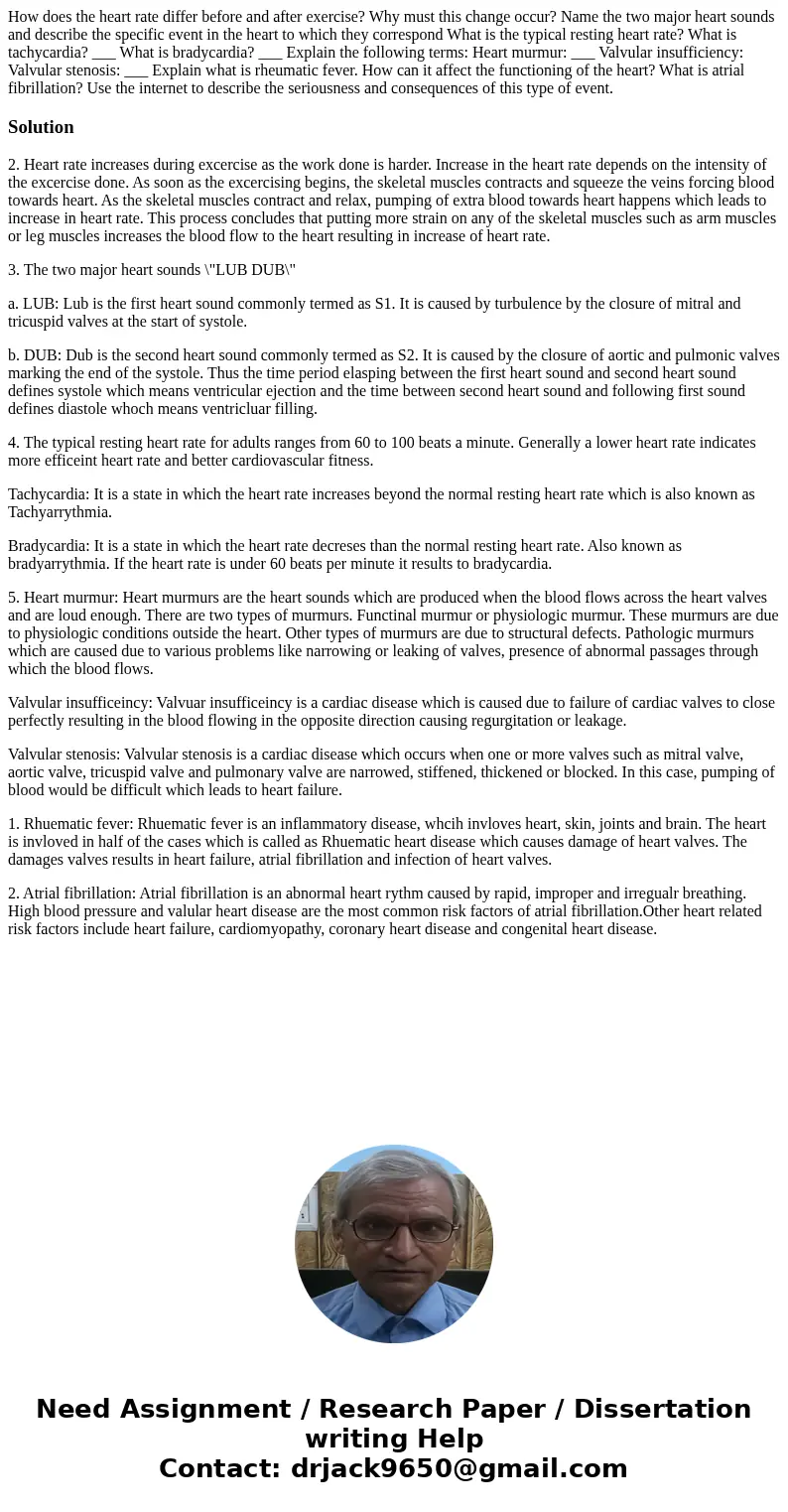How does the heart rate differ before and after exercise Why
Solution
2. Heart rate increases during excercise as the work done is harder. Increase in the heart rate depends on the intensity of the excercise done. As soon as the excercising begins, the skeletal muscles contracts and squeeze the veins forcing blood towards heart. As the skeletal muscles contract and relax, pumping of extra blood towards heart happens which leads to increase in heart rate. This process concludes that putting more strain on any of the skeletal muscles such as arm muscles or leg muscles increases the blood flow to the heart resulting in increase of heart rate.
3. The two major heart sounds \"LUB DUB\"
a. LUB: Lub is the first heart sound commonly termed as S1. It is caused by turbulence by the closure of mitral and tricuspid valves at the start of systole.
b. DUB: Dub is the second heart sound commonly termed as S2. It is caused by the closure of aortic and pulmonic valves marking the end of the systole. Thus the time period elasping between the first heart sound and second heart sound defines systole which means ventricular ejection and the time between second heart sound and following first sound defines diastole whoch means ventricluar filling.
4. The typical resting heart rate for adults ranges from 60 to 100 beats a minute. Generally a lower heart rate indicates more efficeint heart rate and better cardiovascular fitness.
Tachycardia: It is a state in which the heart rate increases beyond the normal resting heart rate which is also known as Tachyarrythmia.
Bradycardia: It is a state in which the heart rate decreses than the normal resting heart rate. Also known as bradyarrythmia. If the heart rate is under 60 beats per minute it results to bradycardia.
5. Heart murmur: Heart murmurs are the heart sounds which are produced when the blood flows across the heart valves and are loud enough. There are two types of murmurs. Functinal murmur or physiologic murmur. These murmurs are due to physiologic conditions outside the heart. Other types of murmurs are due to structural defects. Pathologic murmurs which are caused due to various problems like narrowing or leaking of valves, presence of abnormal passages through which the blood flows.
Valvular insufficeincy: Valvuar insufficeincy is a cardiac disease which is caused due to failure of cardiac valves to close perfectly resulting in the blood flowing in the opposite direction causing regurgitation or leakage.
Valvular stenosis: Valvular stenosis is a cardiac disease which occurs when one or more valves such as mitral valve, aortic valve, tricuspid valve and pulmonary valve are narrowed, stiffened, thickened or blocked. In this case, pumping of blood would be difficult which leads to heart failure.
1. Rhuematic fever: Rhuematic fever is an inflammatory disease, whcih invloves heart, skin, joints and brain. The heart is invloved in half of the cases which is called as Rhuematic heart disease which causes damage of heart valves. The damages valves results in heart failure, atrial fibrillation and infection of heart valves.
2. Atrial fibrillation: Atrial fibrillation is an abnormal heart rythm caused by rapid, improper and irregualr breathing. High blood pressure and valular heart disease are the most common risk factors of atrial fibrillation.Other heart related risk factors include heart failure, cardiomyopathy, coronary heart disease and congenital heart disease.

 Homework Sourse
Homework Sourse